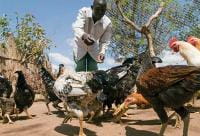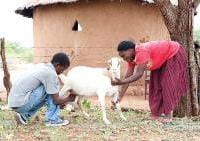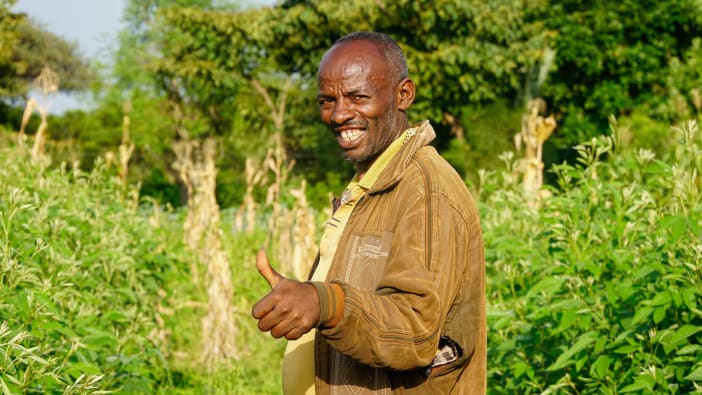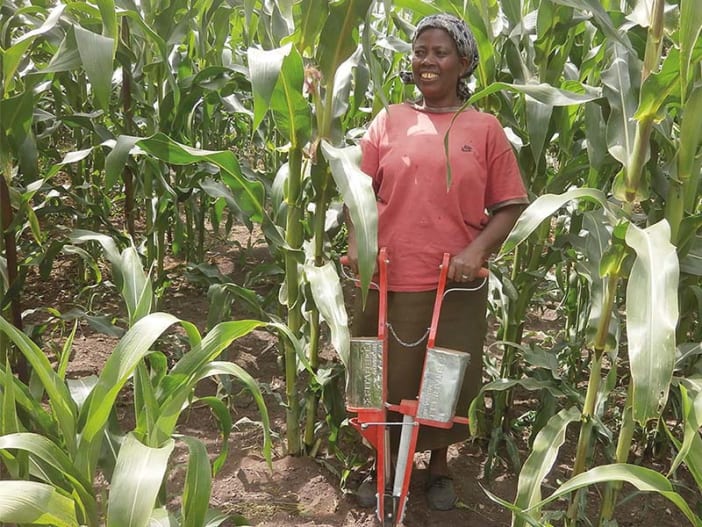Not everyone agrees on what role livestock should play in development today. Let’s think about some of the evidence to help us answer the question of whether livestock are a blessing or a burden. First, what do we mean by livestock, and then, what are the problems that arise in livestock production?
‘Livestock’ generally refers to domestic animals, which are often divided into groups. The principal groups of animals are cattle, buffaloes, camels, sheep, goats, pigs, horses, mules, donkeys, rabbits, chickens and other fowl (eg guinea fowl, ducks, geese, turkeys, ostriches). Other groups are common in specific geographical regions: guinea pigs, fur animals (eg mink), deer and reindeer, llamas, alpacas, vicuñas and guanacos. Usually we do not include fish or bees.
Conflict and migration
Since ancient times, the use of natural resources by livestock has been a source of conflict. The Bible records the separation between Abraham and Lot ‘because the land could not support them while they stayed together’ (Genesis 13:6) and also recounts a later quarrel between the herdsmen of Isaac and those of Abimelek over water resources (Genesis 26:19-20).
Competition for land and water resources, often among livestock-keeping pastoral peoples, is at the root of some conflicts today in the drylands of Africa. Leading up to the independence of South Sudan in 2011, the indigenous Nuba tribe in Southern Kordofan complained about the damage caused by the camel-herding Shanabla tribe who had been forced to migrate south in search of grazing land. Conflict followed.
Land, soil, water and deforestation
My first encounter with the problems caused by livestock production was the evidence of land degradation I saw in Southern Africa where I began my overseas work as an agricultural scientist. The soil of Swaziland was being washed into the Indian Ocean at an alarming rate. We now know that overgrazing is a big problem in many farming systems and loss of vegetation over large areas probably leads to negative impacts on rainfall patterns.
In large parts of Central and South America, forests have been cut down to increase the pasture available for large-scale ranching to provide beef for international markets. Such deforestation contributes to environmental damage, including loss of biodiversity and the presence of greenhouse gases in the atmosphere. Often, the benefits are only financial, short-term and are only shared by a few people.
Research from across the world (including Colombia, Niger and Somalia) has shown that it is very important to use local knowledge to manage pastures in a sustainable way.
It suggests that livestock grazing should be balanced with other uses of the land, such as growing crops, housing, pathways, forests etc.
Livestock often consume feed grown on land suitable for human food production, and sometimes compete for food that can be used for humans. Livestock convert feed into food in an inefficient way compared to crops. Much research also shows that waste, including livestock manure and gases from ruminants (particularly from intensive production systems) causes pollution of water resources and is a significant contributor to greenhouse gases from agriculture.
What are the benefits?
Are livestock worth these costs? Part of the answer is that livestock provide income and can improve people’s health and the environment. In some regions there may not be an alternative way of making a living. The principal economic outputs of livestock production are:
- human nutrition: meat, milk and eggs
- non-food products: fibres such as wool, hair and silk; hides, skins, feather, furs, bones and horn; manure for fertiliser
- feedstuffs for other animals: meat, bone and blood meal
- other functions: animal traction and human transport, recreation, social exchange (ceremonial gifts etc.) and welfare and economic security.











